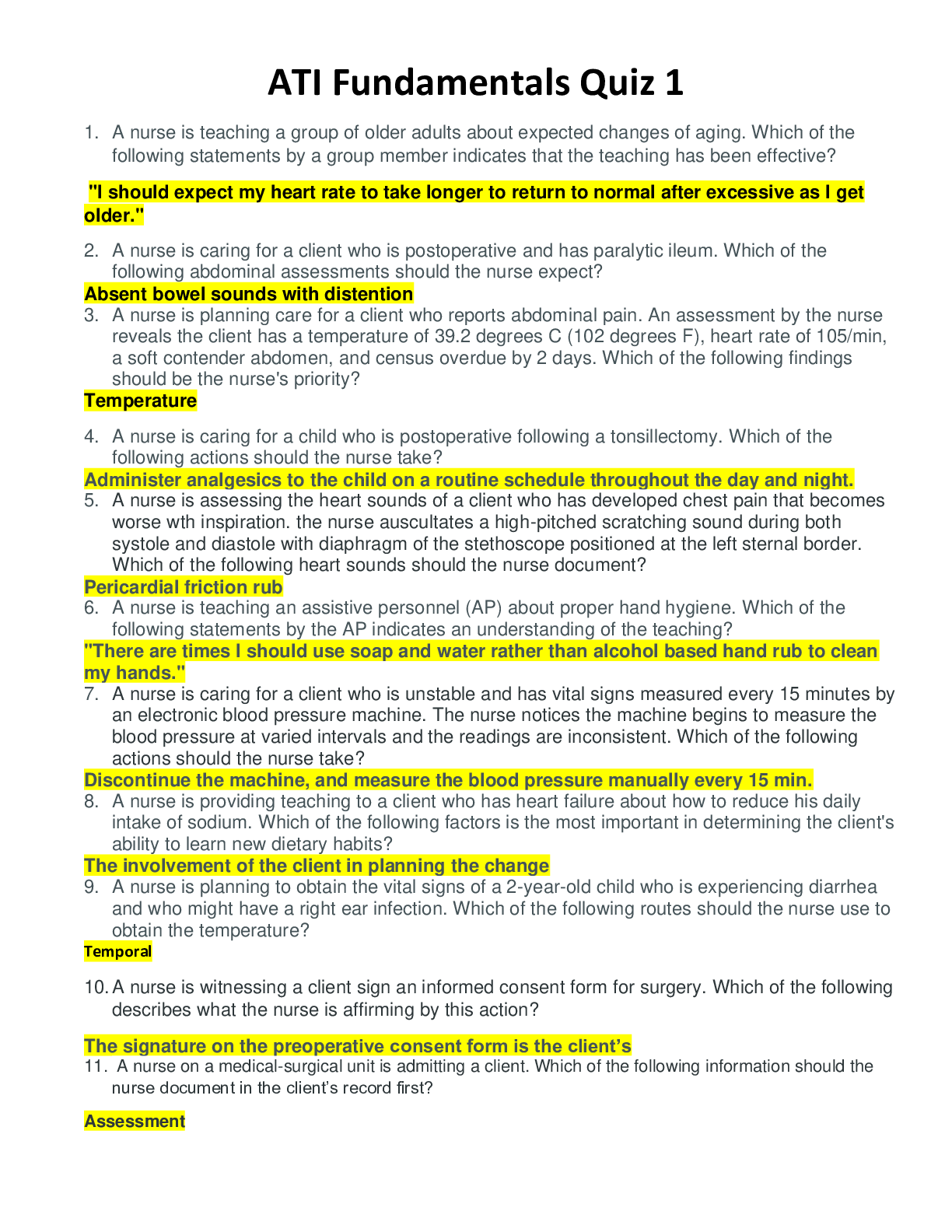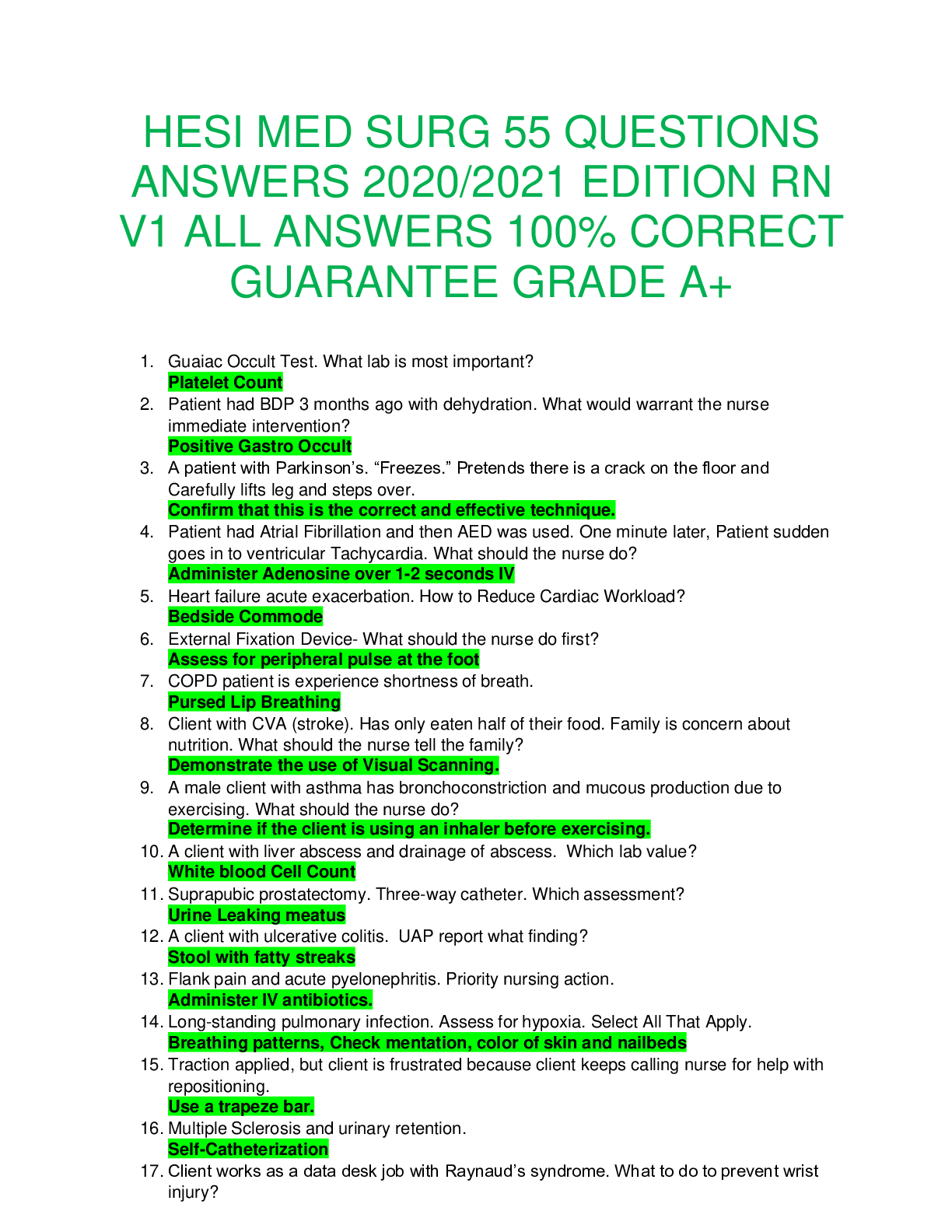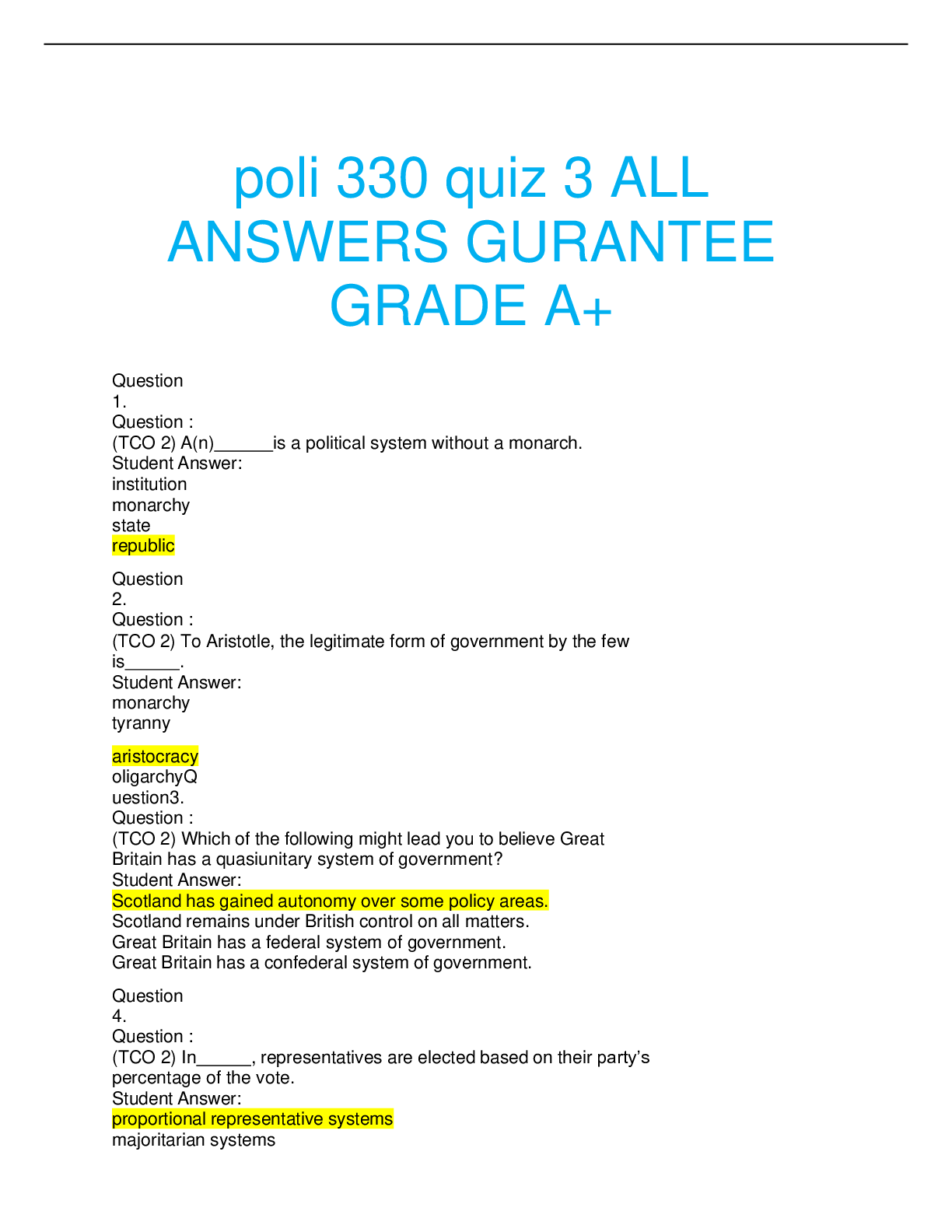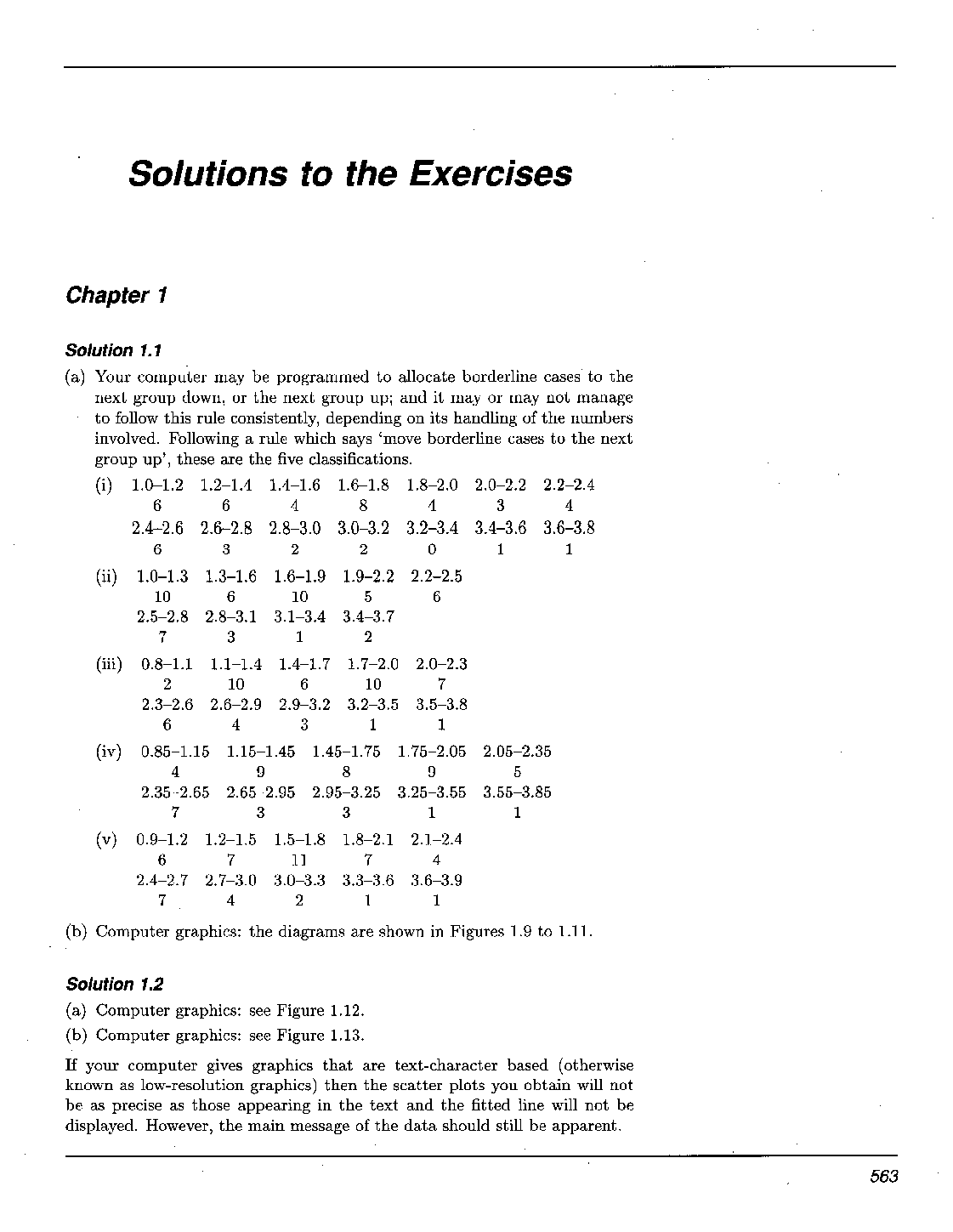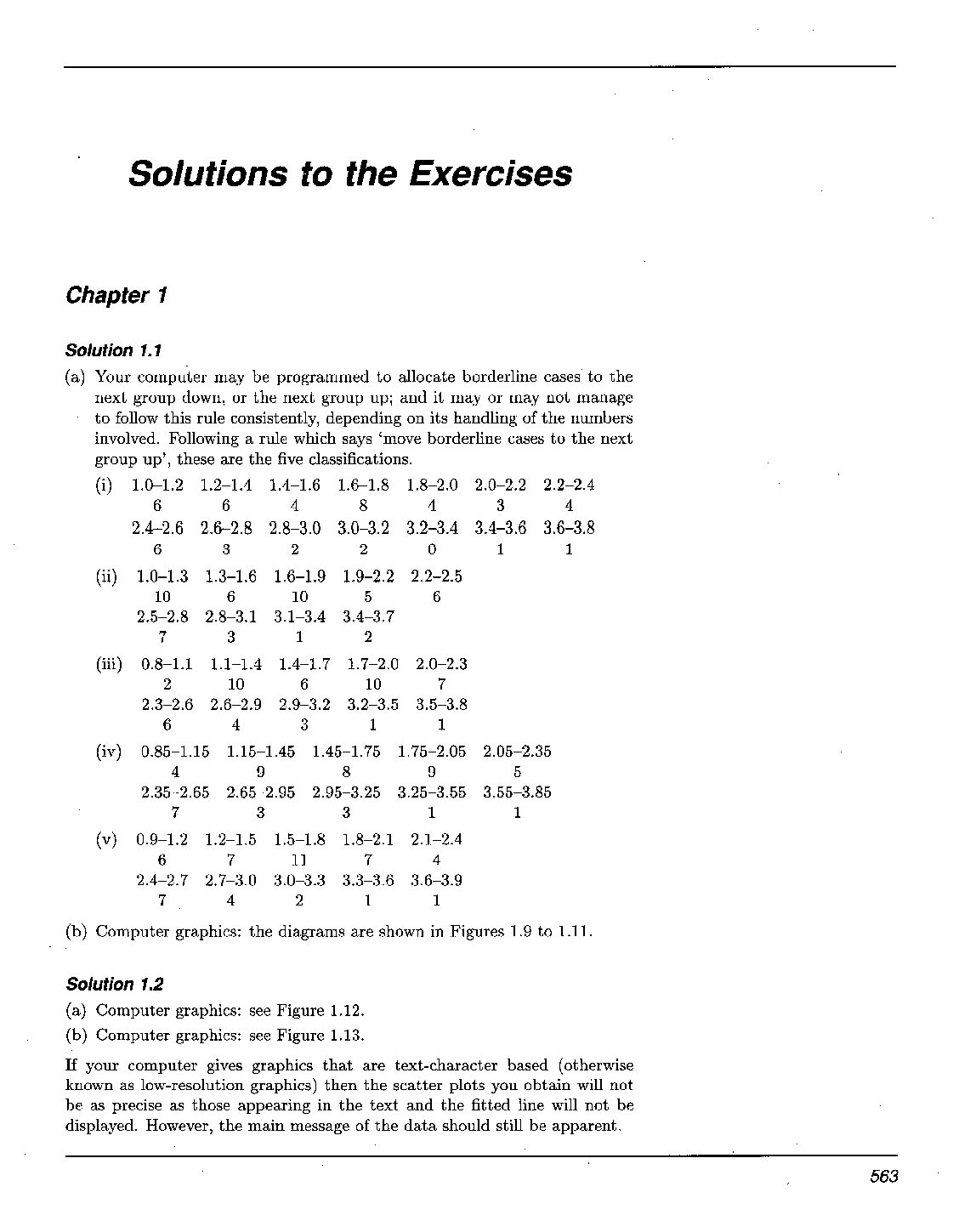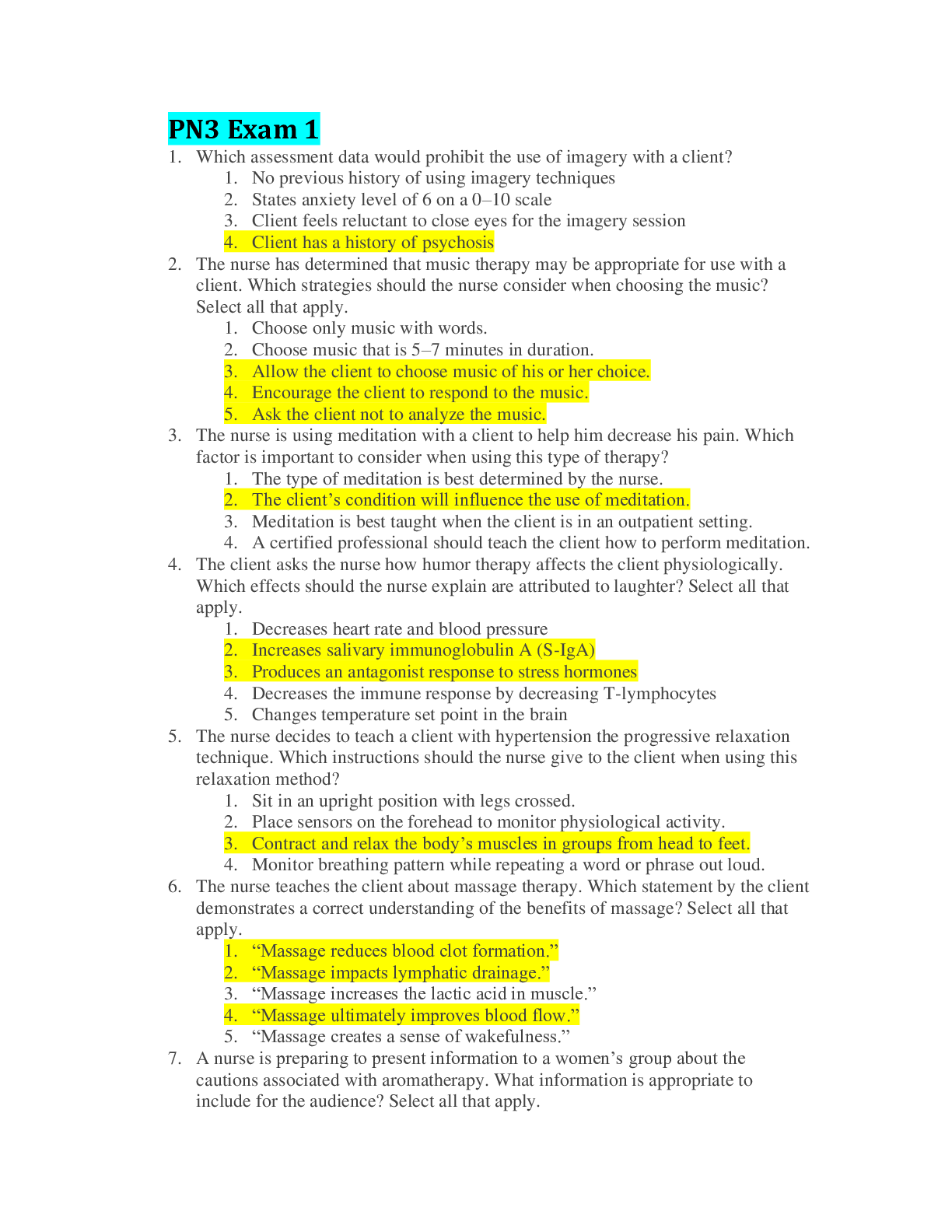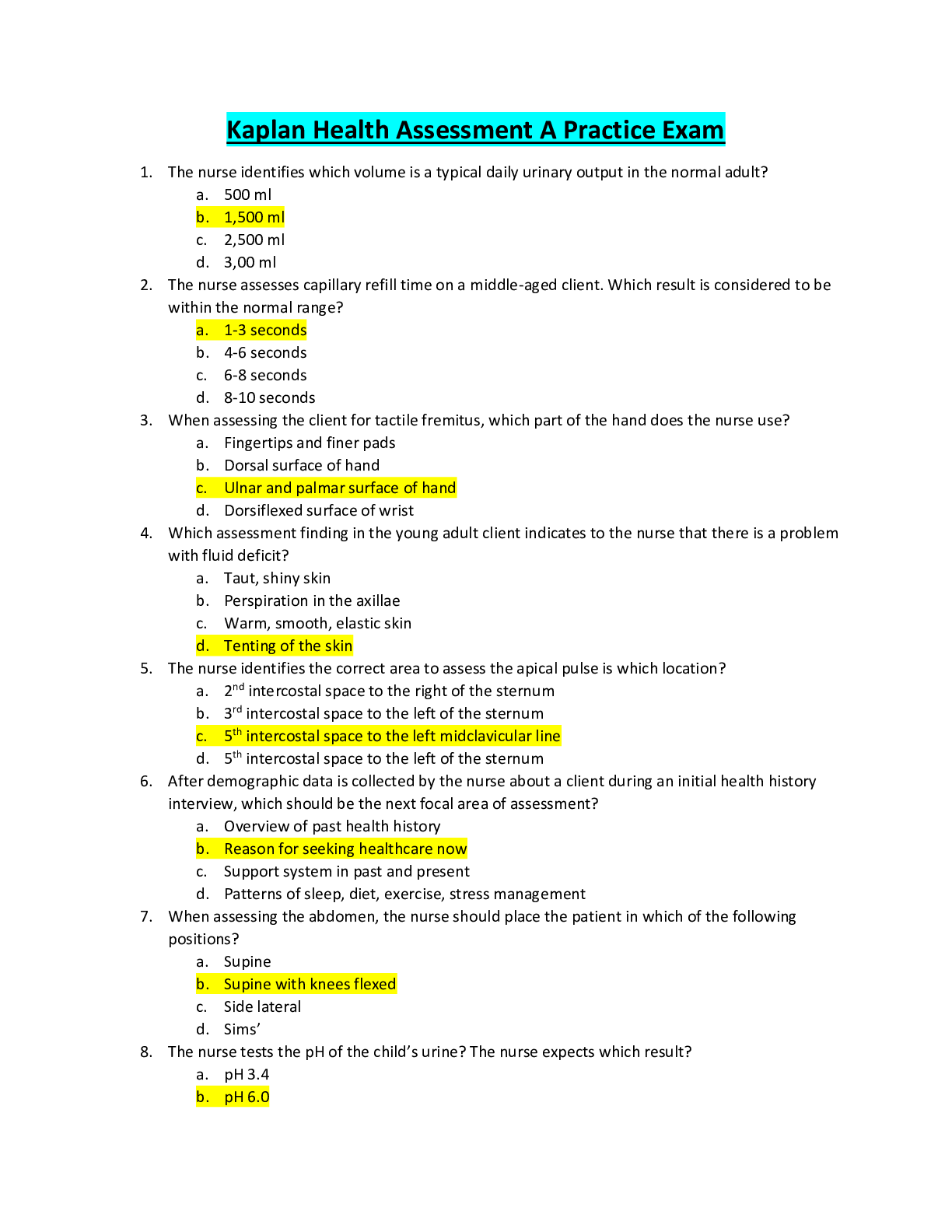SCIENCE 101 > QUESTIONS & ANSWERS > Practice Questions on Inventory Management ALL ANSWERS 100% CORRECT AID GRADE ‘A’ (All)
Practice Questions on Inventory Management ALL ANSWERS 100% CORRECT AID GRADE ‘A’
Document Content and Description Below
Chapter 6 For practice on problems related to Chapter 6, you can work through the Problems 6.1 - 6.5 from the back of the chapter. (In doing so, interpret "annual costs" as total controllable costs.)... Problem 6.1 Suppose you purchase from a supplier at $4 per unit a part with which you assemble rd widgets. On average, you use 50,000 units of this part each year. Every time you order this particular part, you incur a sizeable ordering cost of $800 regardless of the number of parts you order. Your cost of capital is 20% per year. a. How many parts should you purchase each time you place an order? b. To satisfy annual demand, how many times per year will you place orders from this part? Problem 6.2 BIM Computers Inc. sells its popular PC-PAL model to distributors at a price of $1,250 per unit. BIM’s profit margin is 20%. Factory orders average 400 units a week. Currently, BIM works in a batch mode and produces a 4-week supply in each batch. BIM’s production process involves three stages: ● PC board assembly (the automatic insertion of parts and the manual loading, wave soldering, and laser bonding of electronic components purchased from outside sources), ● Final assembly, and ● Testing. When the firm wants to change production from one model to another, it must shut down its assembly line for half a way. The company estimates that downtime costs one-half hour of supervisory time and an additional $2,000 in lost production and wages paid to workers directly involved in changeover operations. Salaries for supervisory personnel involved amount to $1,500 a day. Although BIM products are generally regarded as high quality, intense price competition in the industry has forced the firm to embark on a cost-cutting and productivity-improvement campaign. In particular, BIM wants to operate with leaner inventories but without sacrificing customer service. Releasing some of the funds tired up in outputs inventory would allow BIM to invest in a new product development project that is expected to yield a risk-adjusted return of 20%. Assume 50 workweeks in a year and 5 working days in a week. a. Determine BIM’s total annual cost of production and inventory control. b. Compute the economic batch size and the resulting cost savings. Problem 6.3 Victor sells a line of upscale evening dresses in his boutique. He charges $300 per dress, and sales average 30 dresses per week. Currently, Victor orders a 10-week supply at one time from the manufacturer. He pays $150 per dress, and it takes 2 weeks to receive each delivery. Victor estimates his administrative cost of placing each order at $225. Because he estimates his cost of capital at 20%, each dollar’s worth of idle inventory costs him $0.20 per year. a. Compute Victor’s total annual cost of ordering and carrying inventory. b. If Victor wishes to minimize his annual cost, when and how much should he order in each batch? What will be his annual cost? c. Compare the number of inventory turns under the current and proposed policies. Problem 6.4 = 2 ×1,560 ×225×30 =$4, 589 A retailer estimates her fixed cost for placing an order at $1,000. Presently she orders in optimal quantities of 400 units. She has, however, heard of the benefits of just-in-time purchasing – a principle that advocates purchasing goods in smaller lots as a means of keeping inventory down. If she wishes to order in lots no larger than 50, what should be her fixed ordering costs? Problem 6.5 Major Airlines wants to train new flight attendants in an economically rational way. The air-line requires a staff of about 1,000 trained attendants to maintain in-flight service. Due to the nature of the job, attendants have a high propensity to quit, with average job tenure being about 2 years; hence the need to train new attendants. Major’s training course takes 6 weeks, after which trainees take 1 week of vacation and travel time before entering the pool from which they are assigned to flight duty as needed to fill vacancies created by attrition. To reduce the dropout rate and ensure the continued availability of trained attendants, Major pays trainees $500 per month while they are training, vacationing, and waiting for assignment. The cost of the training itself consists mainly of salaries for instructors ($220 per person per week) and support personnel ($80 per person per week). A training team consists of 10 instructors and 10 supporting personnel. The team is paid only for the time engaged in training, and pay is independent of both class size and the number of classes running simultaneously. Assume 50 workweeks in a year. a. Determine the most economical size of a trainee class, the annual total cost of this policy, and the time interval between starting consecutive classes. Draw the inventory buildup diagram, showing when each batch will begin and end training, when each will take vacation time, and when each will be ready for duty. b. Now modify the solution in part (a) so that only one class will be in training at one time. Note that this requirement means that a new class must start every 6 weeks. Determine corresponding class size and total annual cost of this operation. Compare your findings for this option with the optimum cost for the option described in part (a) and make a recommendation as to which option Major Airlines should choose. Solution: Chapter 7 For practice on problems related to Chapter 7, you can work through the Problems 7.2, 7.4, and 7.5 from the back of the chapter. Problem 7.2 Weekly demand for diskettes at a retailer is normally distributed with a mean of 1,000 boxes and a standard deviation of 150. Currently, the store places orders via paper that is faxed to the supplier. Assume 50 working weeks in a year and the following data: ● Lead time for delivery of an order is 4 weeks. ● Fixed cost (ordering and transportation) per order is $100. ● Each bos of diskettes costs $1. ● Holding cost is 25% of average inventory value. ● The retailer currently orders 20,000 diskettes when stock on hand reaches 4,200. a. Currently how long, on average, does a diskette spend in the store? What is the annual ordering and holding cost under such a policy? b. Assuming that the retailer wants the probability of stocking out in a cycle to be no more than 5%, recommend an optimal inventory policy (a policy regarding order quantity and safety stock). Under your recommended policy, how long, on average, would a box of diskettes spend in the store? c. Claiming that it will lower lead time to 1 week, the supplier is trying to push an EDI system on the retailer. In terms of costs and flow times, what benefits can the retailer expect to realize by adopting the EDI system? Problem 7.4 Johnson Electronics sells electrical and electronic components through catalogs. Catalogs are printed once every two years. Each printing run incurs a fixed cost of $25,000, with a variable production cost of $5 per catalog. Annual demand for catalogs is estimated to be normally distributed with a mean of 16,000 and standard deviation of 4,000. Data indicate that, on average, each customer ordering a catalog generates a profit of $35 from sales. Assuming that Johnson wants only one printing run in each two-year cycle, how many catalogs should be printed in each run? Problem 7.5 As owner of Catch-of-the-Day Fish Shop, you can purchase fresh fish at $18 per crate each morning from the Walton Fish Market. During the day, you sell crates of fish to local restaurants for $120 each. Coupled with the perishable nature of your product, your integrity as a quality supplier requires you to dispose of each unsold crate at the end of the day. Your cost of disposal is $2 per crate. You have a problem, however, because you do not know how many crates your customers will order each day. To address this problem, you have collected the several days’ worth of demand data shown in Table 7.4. You now want to determine the optimal number of crates you should purchase each morning. Table 7.5 Demand at Catch-of-the-Day Fish Shop Demand 0 1 2 3 4 5 6 7 8 9 10 11 12 13 14 15 Frequenc y 0 0 0 1 3 2 5 1 6 7 6 8 5 4 1 3 [Show More]
Last updated: 1 year ago
Preview 1 out of 7 pages
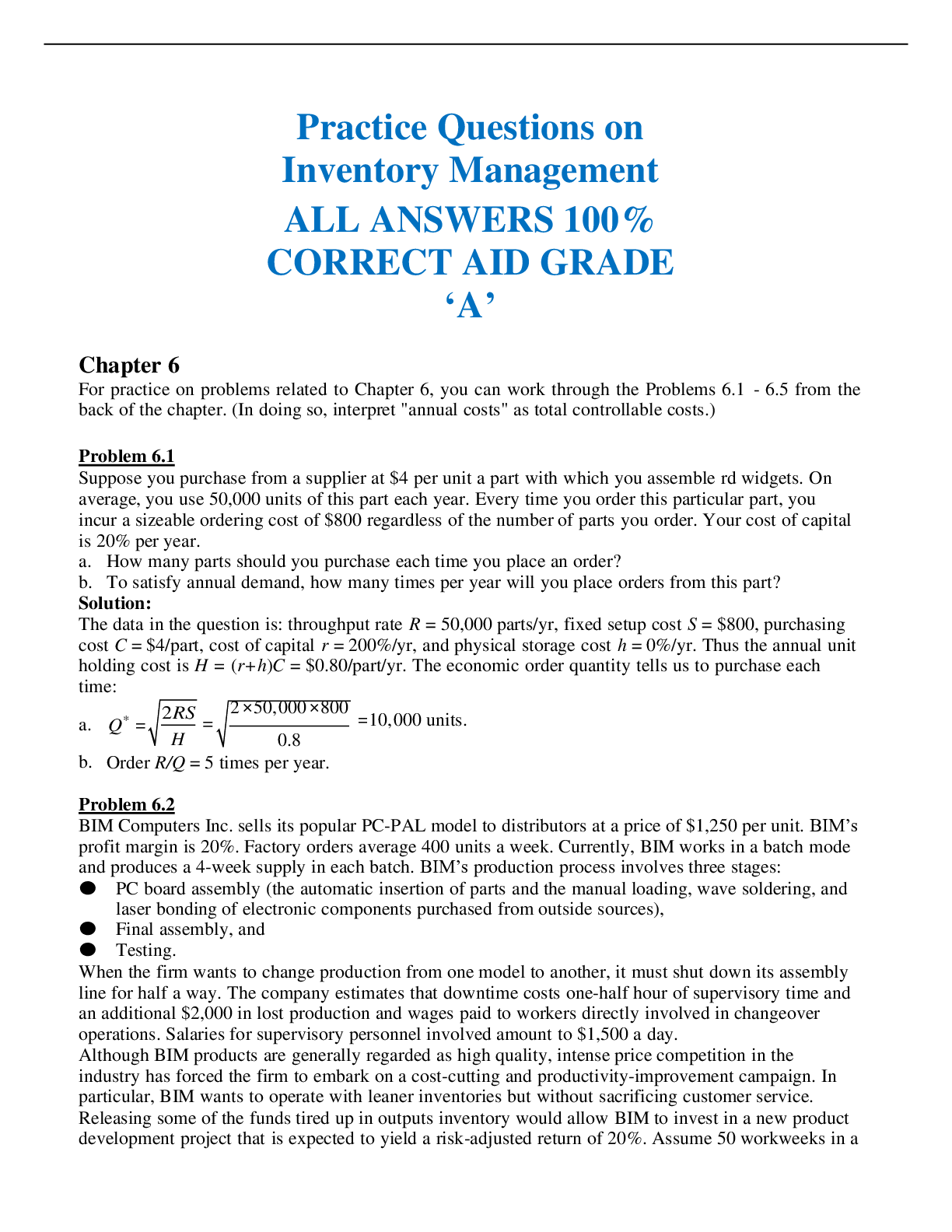
Buy this document to get the full access instantly
Instant Download Access after purchase
Add to cartInstant download
We Accept:

Reviews( 0 )
$14.00
Document information
Connected school, study & course
About the document
Uploaded On
Apr 03, 2021
Number of pages
7
Written in
Additional information
This document has been written for:
Uploaded
Apr 03, 2021
Downloads
0
Views
36

